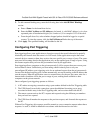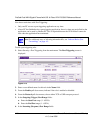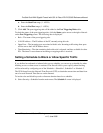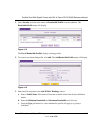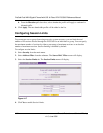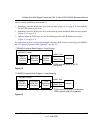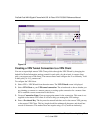
5-1
v1.2, June 2008
Chapter 5
Virtual Private Networking Using IPsec
This chapter describes how to use the IPsec virtual private networking (VPN) features of the
ProSafe Dual WAN Gigabit Firewall with SSL & IPsec VPN to provide secure, encrypted
communications between your local network and a remote network or computer.
This chapter contains the following sections:
• “Considerations for Dual WAN Port Systems” on page 5-1
• “Configuring an IPsec VPN Connection using the VPN Wizard” on page 5-4
• “Managing VPN Tunnel Policies” on page 5-13
• “Creating a VPN Client Connection: VPN Client to FVS336G” on page 5-16
• “Configuring Extended Authentication (XAUTH)” on page 5-19
• “Manually Assigning IP Addresses to Remote Users (ModeConfig)” on page 5-23
• “Configuring Keepalives and Dead Peer Detection” on page 5-29
• “Configuring NetBIOS Bridging with VPN” on page 5-31
Considerations for Dual WAN Port Systems
If both of the WAN ports of the VPN firewall are configured, you can enable either Auto-Rollover
mode for increased system reliability or Load Balancing mode for optimum bandwidth efficiency.
The WAN mode selection determines how several of the VPN features must be configured.
Refer to “Virtual Private Networks (VPNs)” on page C-10 for an overview of the IP addressing
requirements for VPN in the two dual WAN modes. To aid in determining the WAN addressing
requirements (FQDN or IP address) for your VPN tunnel in either dual WAN mode, see Table 5-1.
Table 5-1. IP Addressing for VPNs in Dual WAN Port Systems
Configuration and WAN IP address Rollover Mode
a
Load Balancing Mode
VPN Road Warrior
(client-to-gateway)
Fixed FQDN required Allowed (FQDN optional)
Dynamic FQDN required FQDN required



